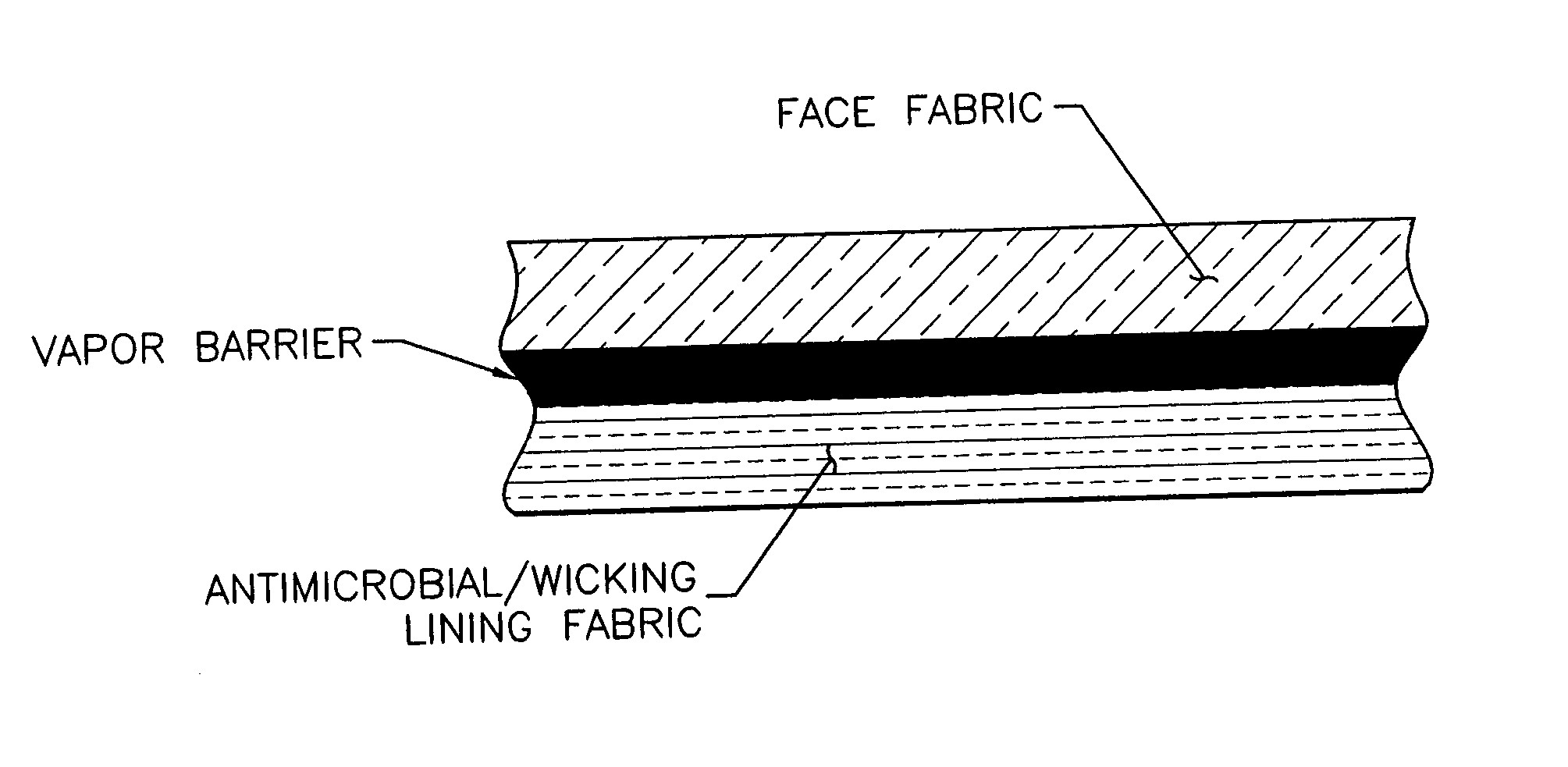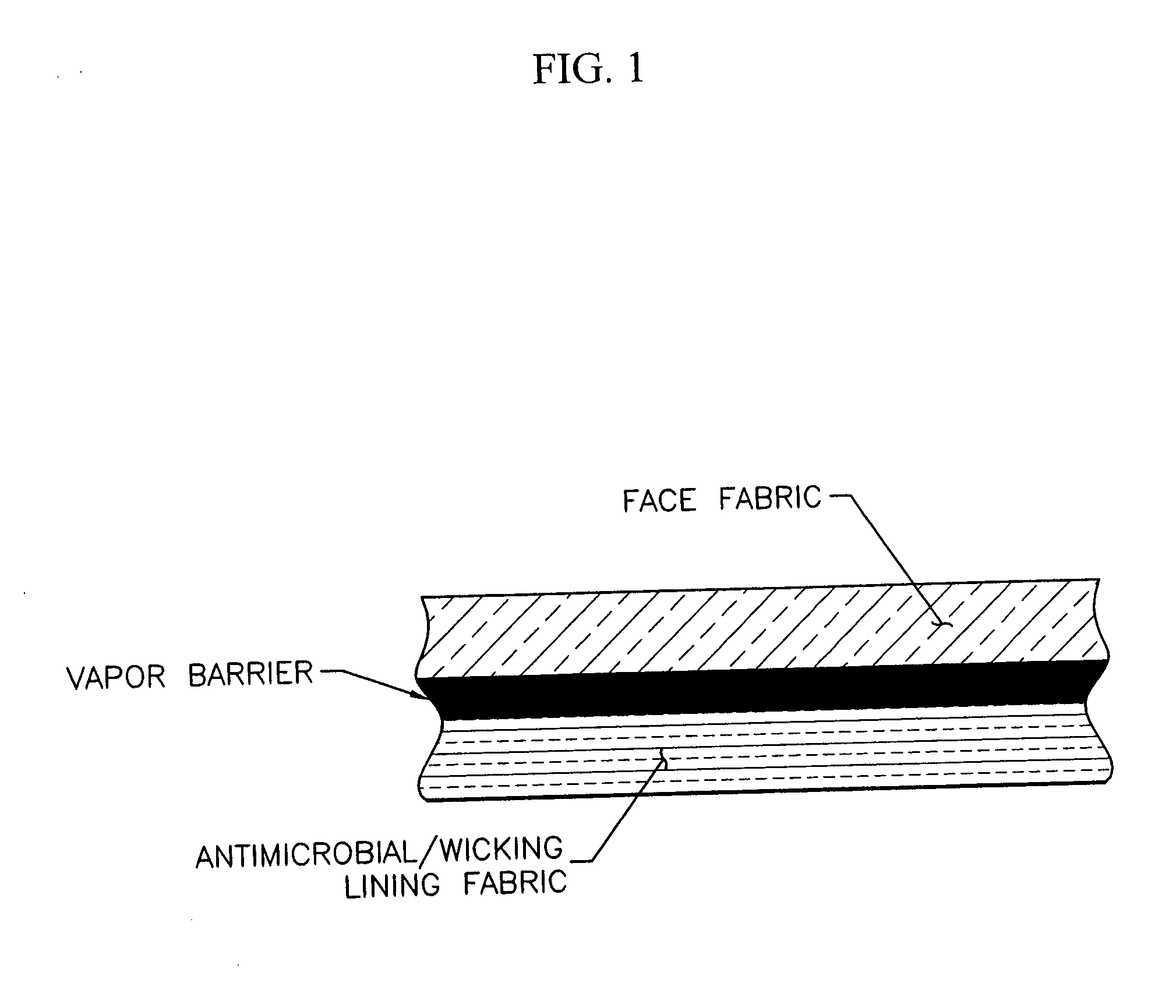Multifunctional composite vapor barrier textile
a multi-functional, textile technology, applied in the direction of weaving, transportation and packaging, synthetic resin layered products, etc., can solve the problems of inability to withstand condensation and potential ice build-up of breathable systems, inability to absorb moisture through fabrics, and inability to maintain a uniform insulating layer
- Summary
- Abstract
- Description
- Claims
- Application Information
AI Technical Summary
Benefits of technology
Problems solved by technology
Method used
Image
Examples
example
[0026] An example of a fabric of the present invention and a brief description of the process for making the fabric is provided. A 30 Demier nylon fabric to be used as the face fabric is first either coated with a hydrophobic surface coating, such as a polyurethane polymer, or is laminated to a barrier film, such as, for example, a polyurethane, olefin, or polyethylene barrier film. The hydrophobic surface coating is applied to the face fabric on the side of the fabric opposite the barrier film. The penetrating surface coating is preferably a cross-linking fluorochemical or a silicone polymer. After the face fabric has been coated with the hydrophobic surface coating and laminated to the barrier film, the lining fabric is applied to the barrier film or coating.
[0027] Alternatively, the lining fabric could be laminated to the barrier film prior to the face fabric being treated with the hydrophobic top coat.
PUM
| Property | Measurement | Unit |
|---|---|---|
| Mass | aaaaa | aaaaa |
| Electrical resistance | aaaaa | aaaaa |
| Hydrophobicity | aaaaa | aaaaa |
Abstract
Description
Claims
Application Information
 Login to View More
Login to View More - R&D
- Intellectual Property
- Life Sciences
- Materials
- Tech Scout
- Unparalleled Data Quality
- Higher Quality Content
- 60% Fewer Hallucinations
Browse by: Latest US Patents, China's latest patents, Technical Efficacy Thesaurus, Application Domain, Technology Topic, Popular Technical Reports.
© 2025 PatSnap. All rights reserved.Legal|Privacy policy|Modern Slavery Act Transparency Statement|Sitemap|About US| Contact US: help@patsnap.com


